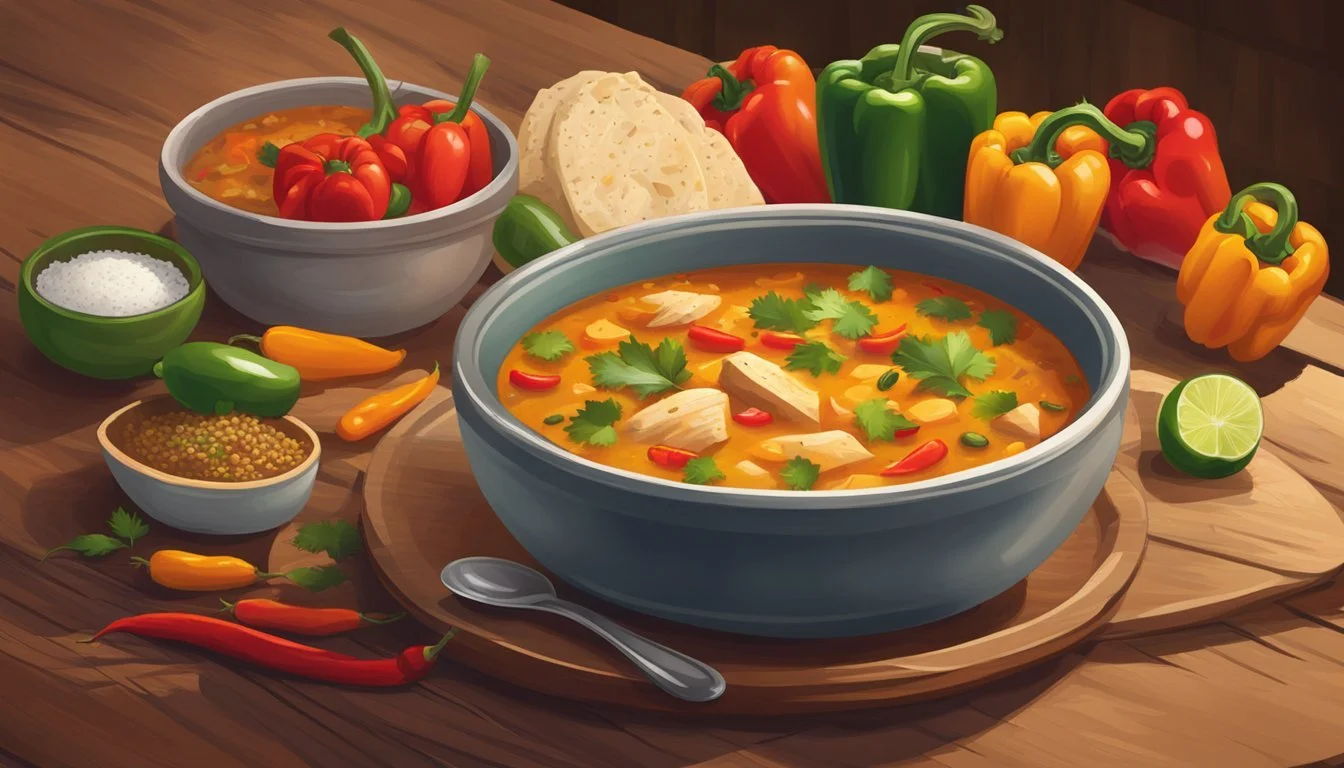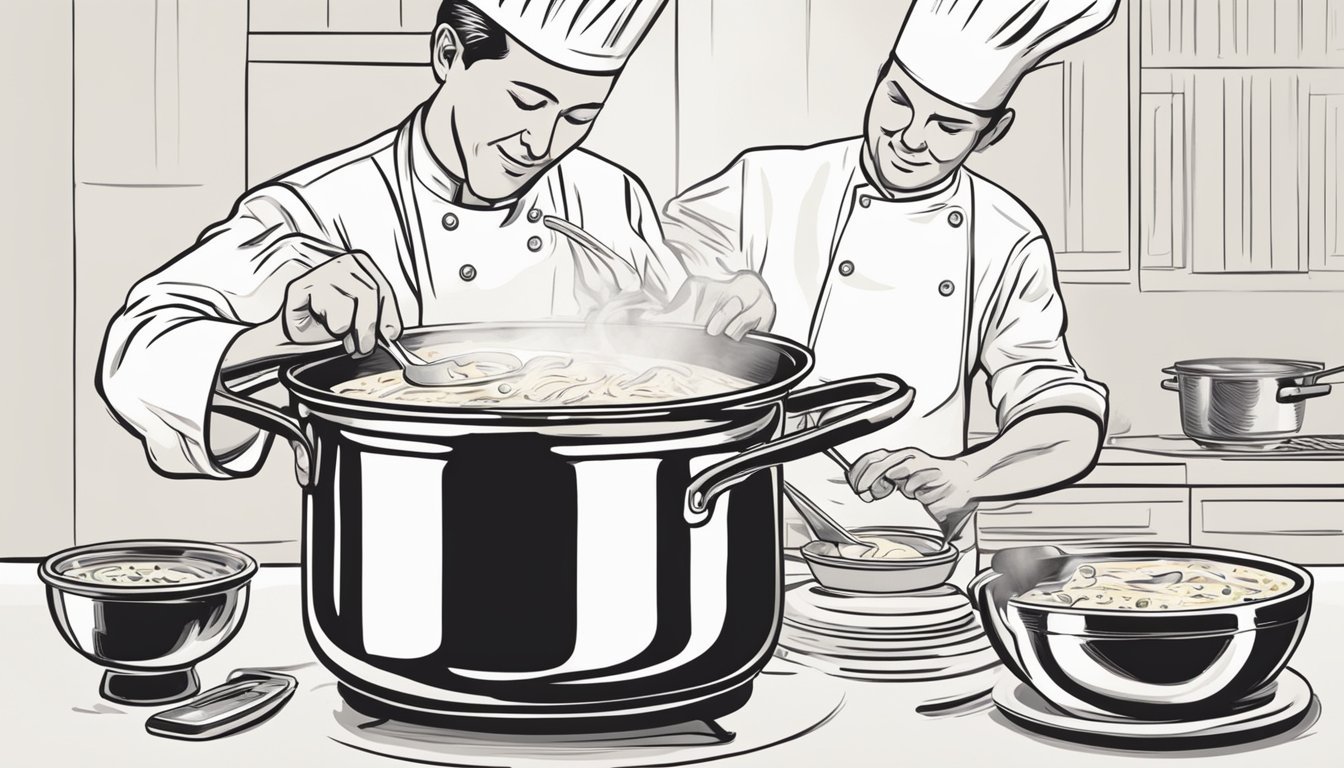Best Way to Reheat Chicken Enchilada Soup
Tips for Creaminess and Flavor Preservation
Warming up leftover chicken enchilada soup presents a unique challenge: keeping the creaminess intact and ensuring the flavors are as vibrant as when it was first prepared. A good reheating method is essential, as it impacts not only the texture but also the taste of the soup. An ill-suited reheating technique can result in a separated or grainy texture, altering the soup's consistency and diminishing its heartiness.
To maintain the soup's desired creaminess, a gentle and controlled reheating process is recommended. Slow heating allows the flavors to meld together without compromising the soup's velvety texture. It's also important to consider the ingredients within the soup; dairy components, such as cheese or cream, require careful attention to prevent curdling.
Reheating chicken enchilada soup on the stove is a preferred method. The consistency of the heat and the ability to stir frequently means that one can avoid hotspots and ensure an even temperature throughout the soup. This method helps preserve the lush texture and rich flavors, making the reheated soup nearly indistinguishable from its original state.
Understanding Chicken Enchilada Soup
Chicken Enchilada Soup is a beloved Tex-Mex dish combining rich flavors and diverse textures. A great soup hinges on the balance of its ingredients and the consistency of its broth.
Key Ingredients for Flavor
Key components of Chicken Enchilada Soup include shredded chicken, robust enchilada sauce, and melted cheese. The base typically involves low-sodium chicken broth to control saltiness. For depth, green chiles, fire-roasted tomatoes, and black beans contribute smoky undertones and earthy notes. The soup is seasoned with a mix of spices, predominantly chili powder and ground cumin, which are quintessential for achieving authentic Tex-Mex flavors.
Aromatic Additions:
Garlic and Onion: Sautéed to form a fragrant foundation.
Bell peppers and Carrots: Additional vegetables for a subtle sweetness and variety.
The Role of Texture in Soup Enjoyment
A satisfying soup offers a contrast of textures. Cream and potentially sour cream introduce a velvety quality, harmonizing with the tender shredded chicken. Corn adds a pleasant pop, while items like rice or small pieces of corn tortillas thicken the broth for a hearty experience. When reheating the soup, it is crucial to maintain the integrity of these textures.
Toppings: A final layer of texture comes from toppings such as crispy tortilla strips, avocado slices, and chopped cilantro, enhancing each spoonful with freshness and crunch.
Storage Tips for Soup Longevity
Effectively storing chicken enchilada soup maximizes its freshness and flavor and ensures a creamy texture when reheated. The preservation technique involves both the way the soup is packed and the temperature at which it is stored.
Best Practices for Refrigerating
To refrigerate chicken enchilada soup, one should allow the soup to cool to room temperature before storing. Transferring the soup into an airtight container is crucial to hinder the growth of bacteria and maintain the soup’s quality. It's recommended to lay a sheet of plastic wrap directly on the surface of the soup before sealing to reduce exposure to air that can cause a layer of film to form. Chicken enchilada soup should be stored in the refrigerator for up to 3-4 days.
Cooling: Let soup reach room temperature.
Airtight Container: Use to prevent contamination.
Plastic Wrap: Place on surface before sealing container.
Refrigerator Storage: Up to 3-4 days.
Freezing and Defrosting Techniques
Freezing is an excellent option for extending the life of chicken enchilada soup beyond a few days. Care should be taken to store the soup in a sealable container suitable for the freezer. Leave about an inch of space at the top as the soup will expand when frozen. When wrapped with aluminum foil or additional plastic wrap, they provide an extra barrier against moisture and freezer burn. To defrost the soup, transfer it to the refrigerator and allow it to thaw slowly, which may take up to 24 hours. Once thawed, the soup can be reheated gently on the stove, stirring frequently to maintain its creamy consistency.
Freezer Containers: Sealable, leaving space for expansion.
Extra Protection: Secure with foil or plastic wrap.
Thawing: 24 hours in the fridge for a gradual defrost.
Reheating: On the stove, with frequent stirring.
Reheating Strategies
When reheating chicken enchilada soup, the goal is to preserve its creamy texture and rich flavor. Choosing the right method is crucial for achieving the best results.
Oven Reheating Method
To reheat chicken enchilada soup in the oven, one should preheat the oven to 350°F before proceeding. Pour the soup into an oven-safe dish, preferably a casserole dish to allow for even heating. Covering the dish with aluminum foil can help keep the moisture in. The time it should spend in the oven will depend on the quantity, but typically it takes about 20-30 minutes. It's important to stir the soup occasionally to ensure uniform heating.
Stovetop Warming Approach
For the stovetop method, they must transfer the soup into a skillet or a Dutch oven to effectively reheat it. Set the stove to medium heat and allow the soup to simmer. Stir frequently to prevent the soup from sticking to the bottom and to distribute the heat evenly. Reheating on the stove can take about 10-15 minutes depending on the amount of soup and one must watch it closely to ensure it does not overheat.
Microwave Heating Tips
When using a microwave, they should place a serving of the enchilada soup in a microwave-safe plate or bowl. Covering the soup with a damp paper towel can help retain steam and prevent the soup from drying out. They must heat in short intervals of 1-2 minutes, stirring in between to distribute the heat. The total time will vary but should not exceed 5 minutes to maintain the soup’s creamy consistency.
Enhancing the Enchilada Soup Experience
To elevate the enjoyment of Chicken Enchilada Soup, one can introduce thoughtful garnishes, complementary side dishes, and inventive serving methods that not only enhance the flavor but also the presentation of the meal.
Garnish and Topping Suggestions
Garnishes play a pivotal role in enriching the soup's flavor profile, while also adding a pleasant textural contrast. Here are some topping recommendations:
Sour Cream: A dollop of sour cream introduces a creamy tanginess that balances the soup's richness.
Cheese: A generous sprinkle of shredded cheddar or Monterey Jack cheese melts into the soup for a gooey texture.
Cilantro: Fresh cilantro leaves provide a burst of herbal freshness.
Avocado: Slices of avocado add a buttery texture and are visually appealing.
Tortilla Strips or Chips: Crispy tortilla strips or crumbled chips offer an enjoyable crunch.
Side Dishes to Complement the Soup
Side dishes should harmonize with the soup's flavors without overwhelming them. Ideal pairings include:
Salad: A light, fresh salad with a lime vinaigrette dressing complements the soup without adding heaviness to the lunch or meal.
Cornbread: Warm cornbread can be used to sop up the soup, adding a sweet and crumbly component.
Creative Ways to Serve and Present
Presentation can transform an ordinary meal into an exceptional one. Some creative serving suggestions are:
Individual Bowls: Serve the soup in individual bowls with the garnishes neatly arranged on top to highlight each component.
Soup Bar: Set up a soup bar where guests can customize their bowls with a selection of garnishes and sides, making the dining experience interactive and personal.
Advanced Preparations and Techniques
To ensure that reheated chicken enchilada soup retains its creamy texture and bold flavors, one must apply mindful advanced preparations and reheating techniques. Here's how to leverage leftovers, cook in bulk, and exploit alternative cooking methods effectively.
Utilizing Leftovers Effectively
When dealing with leftover chicken enchilada soup, it is crucial to cool the soup rapidly before refrigeration to maintain its quality. Upon reheating, the addition of a small amount of fresh cream or cream cheese can revitalize the soup's creamy consistency. A sprinkle of cumin and dried oregano can also reinvigorate the flavor.
Cool Rapidly: Transfer soup to shallow containers and refrigerate.
Revitalize Creaminess: Stir in cream cheese or fresh cream while reheating.
Enhance Flavor: Add a pinch of cumin and dried oregano upon reheating.
Cooking in Bulk for Future Meals
Cooking chicken enchilada soup in bulk and freezing it in portion-sized containers allows for convenient future meals. However, to retain the soup's texture, one should freeze the base of the soup without the dairy components, adding them during the reheating process to avoid separation.
Bulk Cooking: Prepare a larger batch and cool.
Freezing: Freeze in portions without dairy.
Reheating: Thaw overnight in the refrigerator, heat slowly, and incorporate dairy ingredients.
Alternative Cooking Methods
For individuals looking to reheat smaller servings of soup or enchiladas, alternative cooking methods such as an air fryer or toaster oven can offer quick and even reheating. Both appliances provide a drier environment, which can help in maintaining the structure of frozen enchiladas.
Air Fryer: Ideal for single servings of enchiladas; reheat for a few minutes until warm throughout.
Toaster Oven: Suitable for both soup and enchiladas; use a covered casserole dish for soups (What wine goes well with soups?) and an open tray for enchiladas to maintain texture.






